2018 Honda Africa Twin Adventure Sports First Ride Review

The AT (Adventure) sports some new upgrades
When I first laid eyes on the 2018 Honda Africa Twin Adventure Sports at the Long Beach International Motorcycle Show, I thought to myself, “Dang that’s a nice paint job and I love the white frame, but man, what a long name.” After talking to some Honda reps about the bike’s intended place in the market and in its own line-up, I left the conversation a bit more confused than when I had started. You see, the Africa Twin Adventure Sports is aimed to more directly compete with the bigger adventure motorcycles that publications and consumers alike, were already comparing it to.
2018 Honda Africa Twin Adventure Sports
| Engine | 18.0/20 |
| Suspension/Handling | 13.5/15 |
| Transmission/Clutch | 9.0/10 |
| Brakes | 8.75/10 |
| Instruments/Controls | 4.0/5 |
| Ergonomics/Comfort | 9.25/10 |
| Appearance/Quality | 9.5/10 |
| Desirability | 9.0/10 |
| Value | 9.0/10 |
| Overall Score | 90/100 |
The new AT AS would offer longer distance touring capability as well as what would be perceived as more off-road-worthy accoutrements. We have seen other manufacturers take adventure bike platforms and aim one model solely at street performance and the other at more off-road focused duty, so where does the Africa Twin Adventure Sports land? Honda says to think of it more as an “SP” model off sorts, referring to the upgraded CBR1000RR SP.
But wait! It gets more confusing before the fog clears when it comes to the 2018 Africa Twin model line-up. The standard Africa Twin receives a fair amount of updates – all of which, and more, are found on the AT Adventure Sports.
As a whole, the Africa Twin line-up receives:
- A new instrument panel which is placed at a shallower angle to provide better visibility while standing as well as a slightly larger sun shield above the screen
- Throttle-by-wire as well as 3 riding modes (Tour, Urban, and Gravel), plus a user-configurable mode to save your preferred settings
- A larger airbox with a 20mm longer intake funnel, adding to low-end performance
- An upgraded exhaust silencer which is said to boost midrange response and offer better sound quality (it sounds great, BTW) by adding an extra catalyzer, becoming .6 L smaller to a 4-liter design, and now using two-chambers rather than the previous three-chamber set up
- Lighter balancer shaft weights, down in weight by 10.6-ounces should add to smoother and quicker roll-on feel at the throttle
- A new lithium-ion battery, a 5.1-lbs savings over the previous lead-acid style
- A total of seven HSTC (traction control) settings up from three offered previously and the option to switch the system off entirely
- New steel footpeg brackets for increased durability and wider footpegs
- Bitchin looking LED turn signals
- Revised passenger footpeg design to give the pilot more room
That’s a pretty substantial list of upgrades on its own, but how is the Africa Twin Adventure Sports differ from the standard AT? Let’s take a look at another easy-to-read bullet-point list!
- A larger gas tank, up 1.4-gallons from the standard model at 6.37-gallons, yielding somewhere in the ballpark of a 250-300 mile range
- A larger front fairing
- An 80mm taller windscreen
- A flatter 1.2-inch taller (two position adjustable) seat and 1.3-inch taller handlebar resulting in better positioning while standing and an overall more open rider triangle
- A small rear storage compartment
- Increased suspension travel and ground clearance (up .9-inches for the fork and .8-inches on the shock, resulting in .8-inches of increased ground clearance), which also includes a higher spring-rate on the Adventure Sports’ suspenders
- A 12-volt accessory socket
- Three level heated grips
- A larger bash plate which offers better coverage for engine’s entirety as well as the exhaust headers
- Light bars
- A steel rear rack
The $1,500 difference in price between the standard Africa Twin and the Adventure Sports seems paltry when considering the bolt-on accessories included on the AS on their own add up to more than the difference in price between the two models, and that isn’t even considering the larger fuel tank or 30th anniversary color scheme. Making the AT AS even more enticing is the fact that the accessories included are incredibly useful and likely to be some of the first parts an Africa Twin owner might purchase on their own anyway.
So, why wouldn’t you want to purchase the Adventure Sports model if you found yourself considering the Honda Africa Twin? While it’s hard to think of many reasons, a couple do come to mind. Adding 1.2-inches to the seat earns the Africa Twin Adventure Sports the award for tallest seat height on a large-displacement adventure bike at 36.2-inches in the standard position and 35.4 in its lowered position. Once you’re rolling, it really doesn’t matter, but with my 5-foot 8-inch height and 30-inch inseam, it made mounting and dismounting the motorcycle the most nerve-wracking part of my time with the new AT AS. There is a lower accessory seat available to help in that regard. Also, if you’re happy with the set-up on the standard model, maybe you don’t want to spend the extra cash or add the extra 25lbs of weight.
I would personally opt for the Adventure Sports over the standard AT, buy that lower accessory seat, slap on more aggressive tires and some larger footpegs for more comfort over long periods of standing, and would probably be fairly content with the bike in stock form.
Honda opted to bring all Dual-Clutch Transmission (DCT) models for our test of the Adventure Sports which would mark my first time riding the Africa Twin with the DCT transmission. This would also be the first time I had used the DCT transmission off-road – my previous experience with the tech being a day ride on the similarly equipped DCT 2018 Honda Gold Wing Tour.
Thankfully, with the DCT on the Africa Twin being highly adjustable, with enough time, I believe you could very easily fine tune the system to work as you might want. Once the motorcycle is flipped on, you start in neutral then use the right switchgear to set into Drive mode. Leaving the bike in Drive will keep the bike in a fairly subdued almost economy-type setting, so we opted to switch the motorcycle into Sport mode which also has three settings within it. Sport 1 being more sporty than drive while still shifting quite low in the rpm, Sport 2, which was preferred for most of our group of riders, still keeps shifts smooth while allowing the bike to rev fairly high into the rpm range, and Sport 3 which will let the bike rev nearly all the way to redline when on the throttle hard. Sport three was just a bit aggressive for most of our riding even during canyon stints. The reality is, that the shift points also have a lot to do with how you get on the throttle as to how aggressively the transmission will interpret your input and shift accordingly. Grab a handful on the highway to pass a car and the bike will likely downshift twice to put the motorcycle into the powerband to give you the necessary oomph to pass.
With the DCT transmission working well for our time on the highway, through town, and through less demanding sections, I was fine leaving it in Sport 2 and letting the motorcycle shift as it may, knowing that I could up or downshift the motorcycle at any time manually with the paddle shifters on the left handlebar switch gear.
Honda Africa Twin Shootout: DCT Vs. Manual Transmission
I gave the DCT system a try both off-road and through tight canyon roads, but found myself constantly shifting the motorcycle back down a gear or two at times to keep it in the powerband through corners or when I needed a quick hit of power to spin up the rear on the dirt. The other issue I had was as I would downshift to enter a corner, the motorcycle would upshift before the corner was finished if I wasn’t hard enough on the gas. These situations left me preferring to set the motorcycle into full manual mode, using the paddle shifters to do all of my shifting, precisely when I wanted to.
I can appreciate the fact that Honda chose to only bring DCT models, forcing everyone to try the system rather than letting them choose, but for the 22-pound weight savings as well as saving $699, I would probably opt for the manual and spend that money on the aforementioned seat, tires, and larger footpegs.
The transmission is so smooth at low rpm that in manual mode it never lugged so low in rpm that it became jerky and was just fine tip-toeing around off-road. To be clear, our off-road sections consisted mostly of long blasts down fire roads with only a few shorter more technical bits.
That did give us the chance to test the bike at near triple-digit speeds off-road which saw the Africa Twin Adventure Sports keeping cool as a cucumber, composed and predictable at all times. Even the few times where I lost the front due to a somewhat vague feel in the siltier stuff, the motorcycle was very forgiving and kept me upright, despite my own slip-ups. The
1.3-inch taller handlebar and wider footpegs made the AT AS feel great while standing, although I would still opt for wider, longer footpegs. I felt in command of the bike at all times whether I was taking advantage of the wide open 43-degree steering lock while moving around slowly, or testing the limits of HSTC setting 1 with perfectly controlled power drifts.
The Adventure Sports Showa suspension isn’t just roughly an inch longer front and rear; it also has a higher spring rate, which likely helped with the extra weight and felt great during the light off-roading we encountered, plus it prevented the suspension from feeling overly soft as we blasted through tight canyon roads. Honda did a great job finding a happy medium. Hopefully we can get our hands on the AT AS soon on our home trails to test how well the suspension can soak up larger bumps on more technical trails.
The 998cc Parallel-Twin engine doesn’t feel as spunky as other adventure bikes on the market, but it’s no slouch, either. Off-road, it has more than enough power to send its claimed 555-pound curb weight barreling down the trail at speeds that could get you into trouble fairly quickly. The engine has remained relatively unchanged from its original debut in 2016.
Nissin braking components offer plenty of bite on-road while not being overly sensitive off-road, and ABS is able to be turned off to the rear wheel for off-road stints via a dedicated button on the dash. The front ABS cannot be shut off.
Next to the ABS button is the “G” button, allowing for quicker clutch actuation putting power to the ground more quickly which helps with split-second decisions on slippery surfaces such as gravel.
I was somewhat surprised with just how much I enjoyed riding the Africa Twin Adventure Sports. With the motorcycle feeling almost infallible off-road, allowing for small mistakes without becoming uncomposed, and predictable easy handling on-road with all day comfort, the AT AS was an absolute blast riding around Prescott, AZ.
It was really no surprise when Honda showed us statistics that placed the Africa Twin as the number two selling bike in the Open Adventure bike category with 21% market share. With over 8,000 sold in the last two years in the U.S, and 51,000 sold worldwide, it seems the motorcycle-verse was poised and ready for the return of the Africa Twin, and the Adventure Sports just takes the adventure further.
In Gear
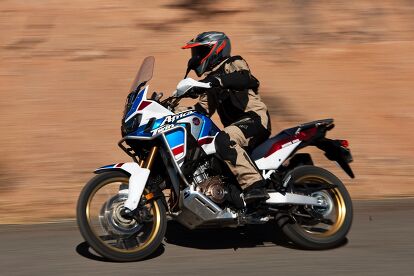
Helmet: AGV AX-8 Dual Evo $429.95 (Graphic no longer available)
Jacket: KLIM Badlands Pro Jacket $999.99
Pants: KLIM Badlands Pro Pant $699.99
Boots: Sidi Adventure Boots $495.00
Gloves: REV’IT! Sand 3 $109.99
Pack: Kriega R15 $139.00
2018 Honda Africa Twin Adventure Sports
+ Highs
- More range
- The extra MSRP is a bargain when considering what you get
- 30th Birthday paint job
– Sighs
- Still no cruise control
- Tall AF
- Display can be difficult to read in certain situations
2018 Honda Africa Twin Specifications | ||||
|---|---|---|---|---|
| Model | CRF1000L2 Africa Twin Adventure Sports DCT | CRF1000L2 Africa Twin Adventure Sports | CRF1000L Africa Twin DCT | CRF1000L Africa Twin |
| Engine Type | 998cc liquid-cooled Unicam four-stroke 22.5° parallel-twin | |||
| Valve Train | SOHC; four valves per cylinder | |||
| Bore x Stroke | 92.0mm x 75.0mm | |||
| Compression Ratio | 10.0:1 | |||
| Induction | PGM-FI electronic fuel injection (Throttle By Wire); (2) 44mm throttle bodies | |||
| Ignition | Full transistorized ignition | |||
| Starter | Electric | |||
| Transmission | 6-speed automatic DCT | 6-speed manual | 6-speed automatic DCT | 6-speed manual |
| Clutch | 2 multiplate wet | Multiplate wet | 2 multiplate wet | Multiplate wet |
| Final Drive | Chain; 16Tx42T | |||
| Front Suspension | 45mm inverted telescopic fork; 9.9 in. travel | 45mm inverted telescopic fork; 9.1 in. travel | ||
| Rear Suspension | Pro-Link system w/ single shock; 9.5 in. travel | Pro-Link system w/ single shock; 8.7 in. travel | ||
| Front Brakes | Two dual-piston hydraulic calipers w/ 310mm disks; ABS | |||
| Rear Brakes | Single one-piston hydraulic caliper w/ 256mm disk; ABS | |||
| Front Tires | 90/90-21 | |||
| Rear Tires | 150/70R-18 | |||
| Rake | 27.3º | 27.5º | ||
| Trail | 4.37 in. | 4.44 in. | ||
| Length | 92.3 in. | 91.9 in. | ||
| Width | 36.7 in. | |||
| Height | 61.8 in. | 58.2 in. | ||
| Seat Height | 36.2 in./35.4 in. | 34.3 in./33.5 in. | ||
| Ground Clearance | 10.7 in. | 9.9 in. | ||
| Wheelbase | 62.2 in. | 62.0 in. | ||
| Fuel Capacity | 6.4 gal. (1.0 gal. reserve) | 4.97 gal. (1.0 gal. reserve) | ||
| Color | White/Blue/Red | Matte Black Metallic; Red/Black/White | ||
| Curb Weight (Claimed) | 555.8 lbs. | 533.0 lbs. | 530.0 lbs. | 506.8 lbs. |

Ryan’s time in the motorcycle industry has revolved around sales and marketing prior to landing a gig at Motorcycle.com. An avid motorcyclist, interested in all shapes, sizes, and colors of motorized two-wheeled vehicles, Ryan brings a young, passionate enthusiasm to the digital pages of MO.
More by Ryan Adams



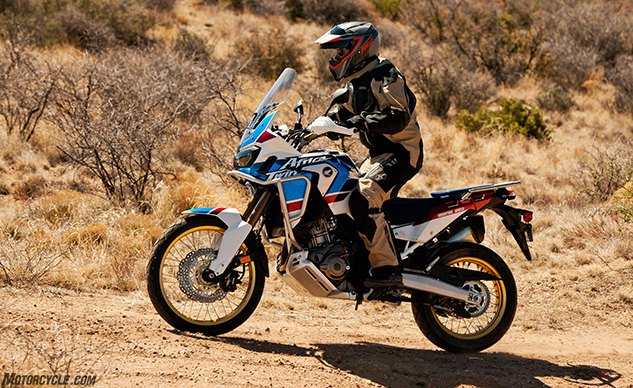












































































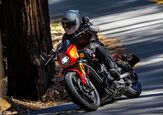
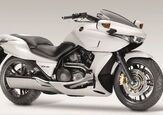
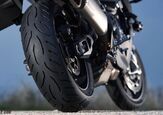
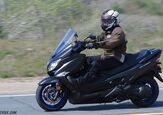
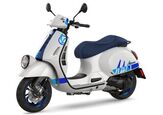

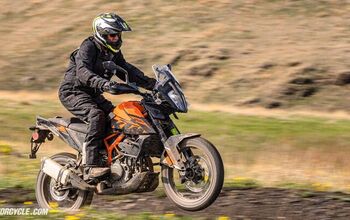
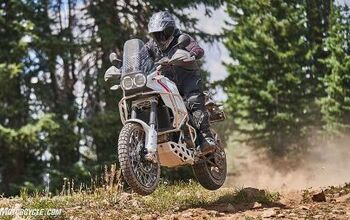
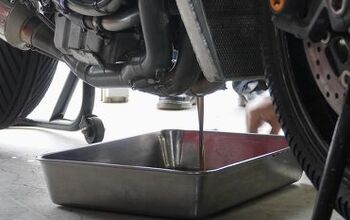
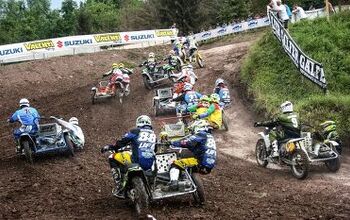
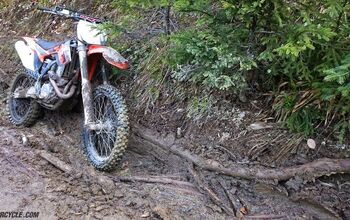
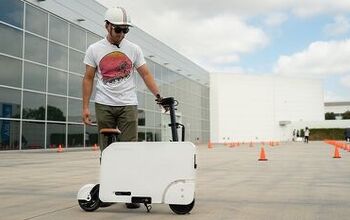
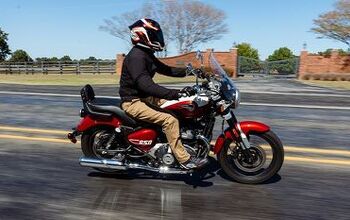
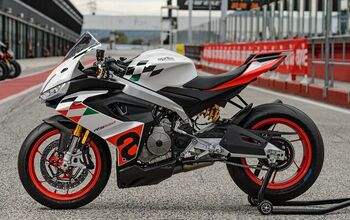
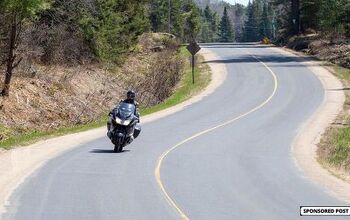
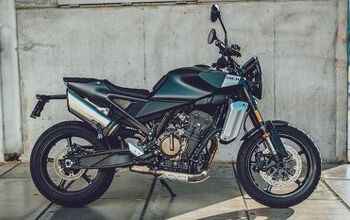
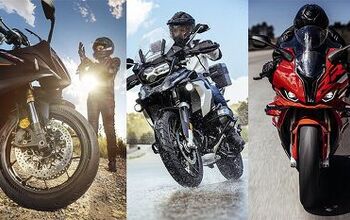
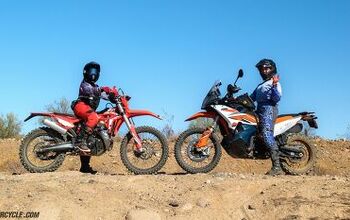
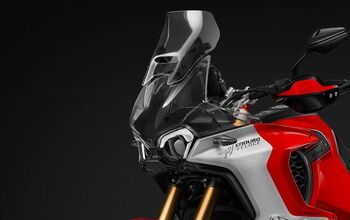

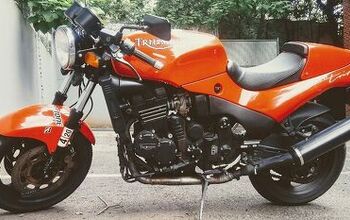
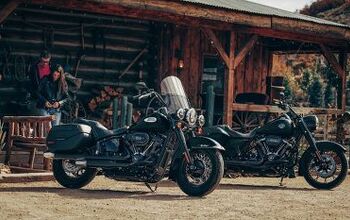
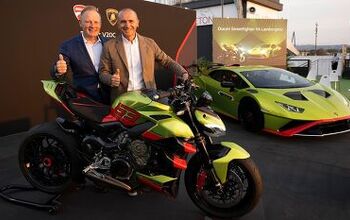
Comments
Join the conversation
My kind of 'large' ADV bike. Plenty of useful power, looks awesome, works well on and off road, priced well in it's category. As nice as this is though I really want the (hopefully) 2019 Yamaha T7 Tenere Rally Raid... kinda' a middle weight Africa Twin coming in at around 420 lbs. Can't wait.
+1 on the "no cruise, no sale". Come on Honda, follow Triumph's lead. They offer cruise as an accessory on several of their bikes. You're really just talking about some lines of code and new switch gear, and it adds some $$ to the transaction price. Triumph gets around $400 for the accessory upgrade.